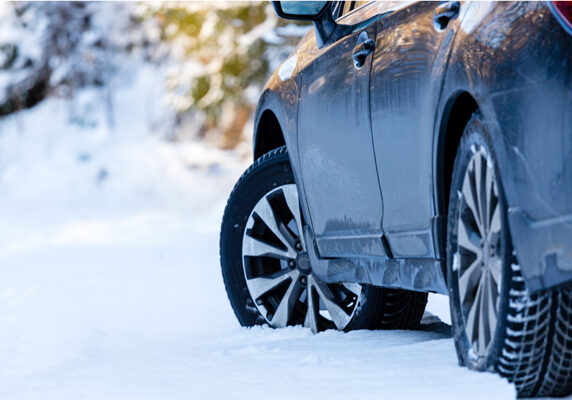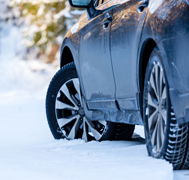
 Getting your car snow ready can seem to take as long as winter itself. But winter car maintenance really doesn’t need to be a hassle — and keeping on top of it will help save you money and reduce debt in the long run.
Getting your car snow ready can seem to take as long as winter itself. But winter car maintenance really doesn’t need to be a hassle — and keeping on top of it will help save you money and reduce debt in the long run.
Here are the top winter car maintenance tips you need to know:
- Check the battery.
A car’s battery power is reduced in cold temperatures, meaning a battery that’s not working well in the summer could turn into a dead battery in the winter. Avoid being stranded by having a volt test done. If your battery is in need of replacing, purchase a new one.
- Replace wiper blades.
Most windshield wiper blades have a shelf life of about one year. Streaks or missed areas of glass are signs it’s time for new wipers. And you’ll especially want wipers that do the job right during winter when their power is needed to clear off salt and ice and snow.
- Keep fluids filled.
Make sure all your fluids are filled and calibrated for winter temperatures: your oil, engine coolant, and washer fluid. Motor oil thickens when it’s cold, making it harder for the engine to turn over. If you haven’t had an oil change in the last 5,000 km, it may be time to take your car in. Engine coolant, a.k.a. antifreeze, should be flushed and filled before the winter. If your washer fluid isn’t all-season or winter-specific, ask your mechanic to do a flush and fill and keep it filled all winter long.
- Don’t let your tires get tired.
All-wheel drive is making drivers more confident in their vehicle, but winter tires are still a must. While all-wheel drive is good for accelerating, it doesn’t make a difference in braking or turning, which is when slippery roads can really do damage. Check your tire pressure, too. As the temperature drops, so does the air in your tires.
- Don’t break your brakes.
Good brakes are important all times of the year, but especially so during the winter when built up ice and snow can cause slippery road conditions. Check your brakes are in good condition before heading out into the cold. Have you heard a squealing sound when braking lately or is it taking longer to bring your car to a full stop? That could mean your brake pad is wearing down. Have your mechanic check, or do it yourself by looking at the brake pad. The brake pad should be about an inch and a half thick.
- Fix burnt-out bulbs
If you’ve been putting off replacing your headlights or taillights, don’t delay. First, having a burnt-out light can result in a ticket and fine, and second, strong lights are even more important in winter when it’s darker earlier and visibility is reduced.
Not getting your car winter-ready can seem like the more frugal choice, but in reality it can be the opposite. If something goes wrong while you’re on the road due to poor maintenance — whether that be an accident, being stranded on the side of the road and needing a tow truck, etc. — it can cost you more and cause more damage to your car. But it can be hard to find the money to maintain everything all at once. If you’re scrambling to find the money for winter car maintenance, a personal loan could make sense.
Personal loans can be put on a fixed repayment schedule, so you’ll know exactly how much you have to pay each month. You can determine your repayment schedule — there is no legal time limit. In addition, personal loans report to your credit report, so you’ll get a better credit score by paying it back on time.
When would a personal loan not make sense? It’s not cost-effective to throw good money after a bad car. If the car has high mileage and/or you’re always having problems with it, maybe it’s time for a new car.
Whether you’re preparing for winter car maintenance or in need of a new vehicle, Prudent can help. Prudent Financial Services offers personal loans, car loans, and sells cars.
Contact us today at www.prudentfinancial.net or call 416-223-9300.
